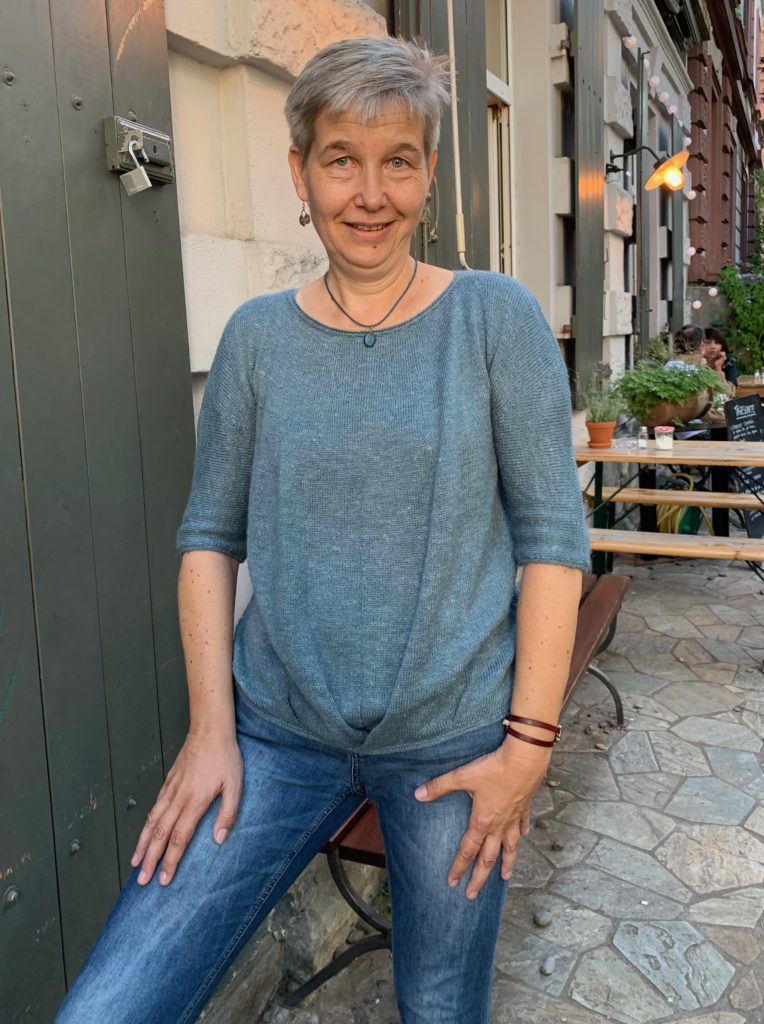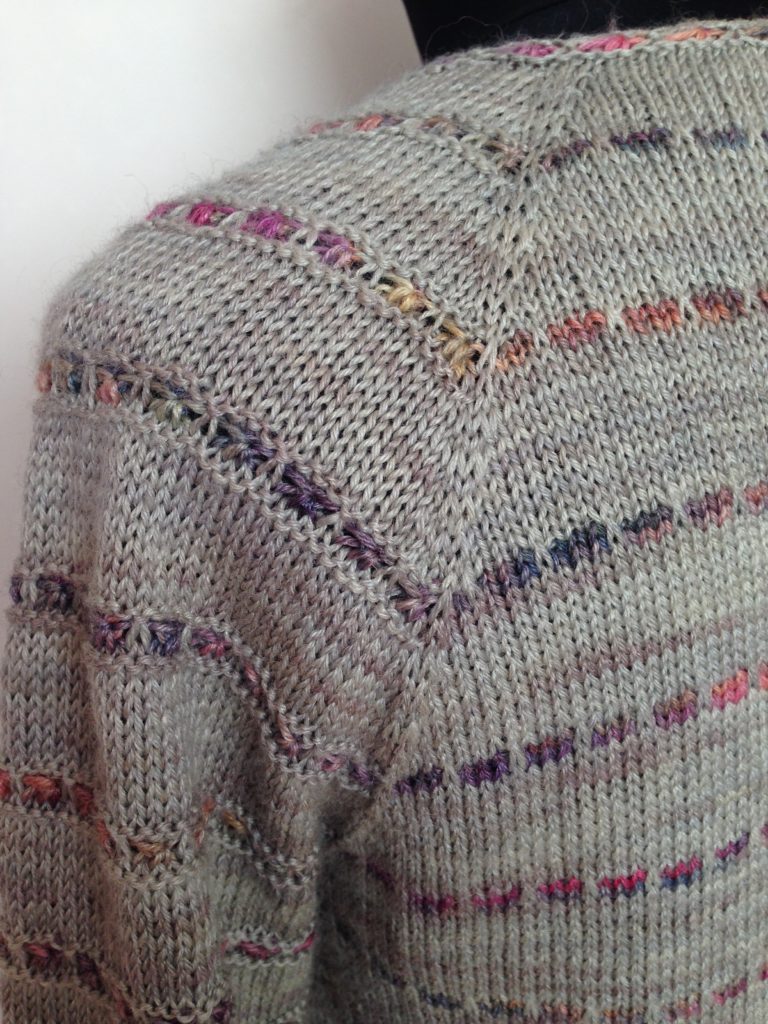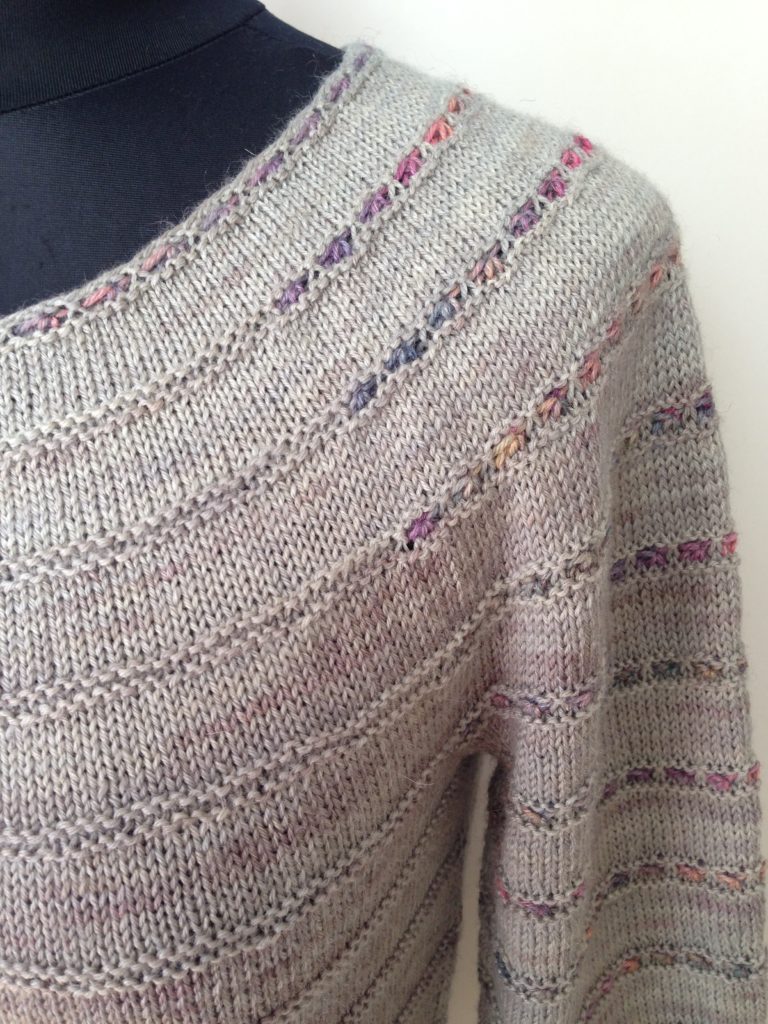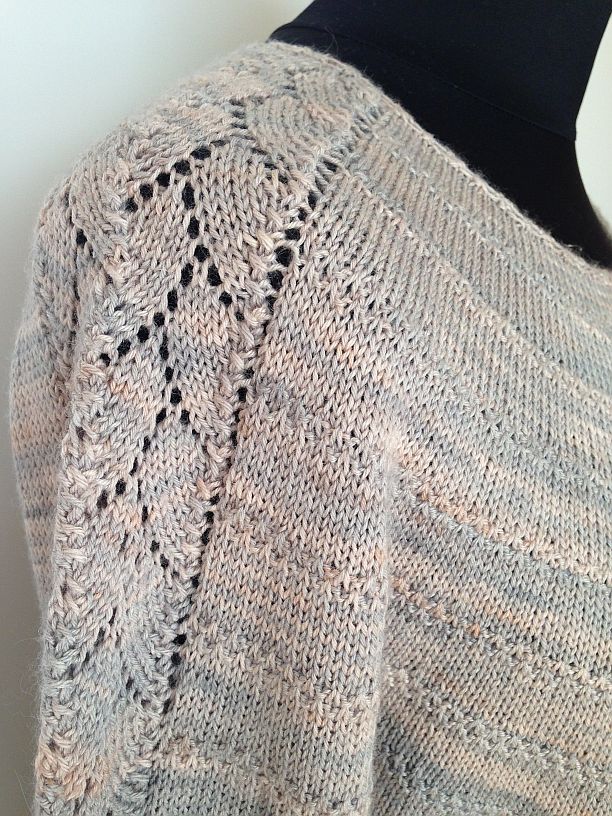I got to interview Anke Telschow; Smilla-DA on Ravelry.

You as a designer questions:
What is your design process?
It really depends. These are the 3 methods which came into my mind first while I was thing about the question:
- A new construction
I did some of my first designs because I had the idea of a round yoke for the front of the sweater (for a nice deep neckline) and a Raglan for the back (to keep the neck warm) and I found no patterns which were using this combination. So I invented it myself, the “YoRa” (yoke/ Raglan) construction which I have used on a number of my sweaters and cardigans, e.g. “Junimond” (https://www.ravelry.com/patterns/library/junimond)


- Starting out with a detail
Sometimes I see one or two details in a garment (e.g. in a shop, or something my friends or colleagues wear) which make me want to create something similar. Usually I end up with something rather different, I just needed the initial idea to get started. When I start, I don’t always have all the details worked out, just the big picture, and the rest will evolve during the knitting process.
- “Listening” to the yarn
For “Hvide Sande”, https://www.ravelry.com/patterns/library/hvide-sande, it was the special color of the yarn (hand-dyed by my friend Maike of https://skudderia.de/) which reminded me of a sea shell I had collected on holiday on Hvide Sande beach in Denmark, so I started off with a shell-like stitch pattern.

What influences your style?
I only design what I would like to wear myself. Scandinavian design has been an inspiration for several years, with designers like Marianne Isager and Annette Danielsen, who, for some reason, are not even that big on Ravelry. And colors are really important to me. The colors of the North, the sea and the coast …
I admit that I look around in clothes shops and department stores a lot, too, so my designs are to some extent influenced by current fashion, e.g. my sweaters became more oversized over time.
What about designing and producing patterns are you most adept at, what parts are you most fond of, and what parts are challenging? (Pattern grading, the last week of editing, coming up with a name for a project, self promotion?)
The best part of it is getting from the first idea to a rough concept, which means scribbling on paper and checking if the idea will work out (e.g. which stitch patterns to use, yarn selection, gauge, proportion …) – I can really get excited in this phase.
Finding the right pattern name can be fun too – when I had named the “Manati” (Manatee sea cow), https://www.ravelry.com/patterns/library/manati because of the big body and the small sleeves, it felt like the pattern had become some sort of individual of its own.

The pattern-writing itself is also a process I really enjoy. (Translation to German sometimes is a bit tedious, but it helps detecting errors.)
Grading is not my favorite pastime, but it’s OK, as long as I have enough free time and concentration to work on it (I earn my living with a ¾ job in the IT business).
Self-promotion is really the most challenging aspect of it all – or is it the test knitting process? Although I usually love the conversation with my test knitters (and some of them are regulars which I know personally), there are those odd situations where you go to bed early because you are really tired, only to find out the next morning that a test knitter threatens to unravel everything and quit because she has not received an answer to a question within 12 hours … (We managed to resolve this situation and she stayed on board, but nevertheless I sometimes find it challenging.)
What do you find most important in photography?
I have to admit that I am not the most gifted photographer in the knitting world. And due to working as a part-time designer, my possibilities are limited when it comes to models and nice surroundings, so most of the time, I end up putting my presentation doll in front of a white wall …
But a photo should focus on the main idea or the most important element of a pattern. And, at the same time, capture the right mood, season, whatever.
You as a Giftalong designer:
What have you learned from the promotion?
It is really a great event, so many people working together. I had participated last year as a designer and was already looking forward to it this year. Unfortunately, this time of the year is always so busy in my main job that I don’t have the time to join the actual knitting.
You as someone who likes to make things questions:
What is your usual process on a fiber project, for instance, do you start with a yarn, a cute pattern, a need you’ve noticed, something exciting you saw in a movie you want to copy, or a technique you want to learn – then what do you do next and then what?
It depends. Either I see a really nice pattern first (although nowadays I hardly use patterns of other designers because I don’t have the time to knit everything I would like to) or I buy a nice yarn and start wondering what to make of it.
Does anything intimidate you in knitting or crochet?
Any mechanically challenging stitches, e.g. where you have to purl several stitches together through the back loop – and my Fair Isle skills are pretty basic, too.
When you want to learn something, do you look it up in a book, on U-tube, or seek a real person to teach you?
U-tube is too fast for me at least when it finally gets to the point when they actually show the movement I was looking for. I prefer the old-fashioned image sequence with a bit of text which I can consume at my personal speed. I don’t own that many knitting books, though, I look up techniques on the Internet.
Any repetitive motion disorders due to knitting or crochet? How do you deal with them?
Not yet, fortunately … But I have a slight notch on my left index finger which won’t go away anymore.
What makes you buy a pattern (lovely photo, the story of the project, it looks do-able, it looks slightly challenging…)
A lovely photo definitely helps, in particular with a surrounding I like, or the right atmosphere – I always get hooked if the photo shooting took place at the coast, on a beach etc. And I have to admit I am influenced too by the color of the sample, although in theory it should be easy to image what the project would look like in a different color.
Apart from that, the pattern should suit my personal style, and the yarn weight is important too – I don’t like to work with anything thicker than Aran, preferably even as thin as (Light) Fingering.
Thank you Anke!
